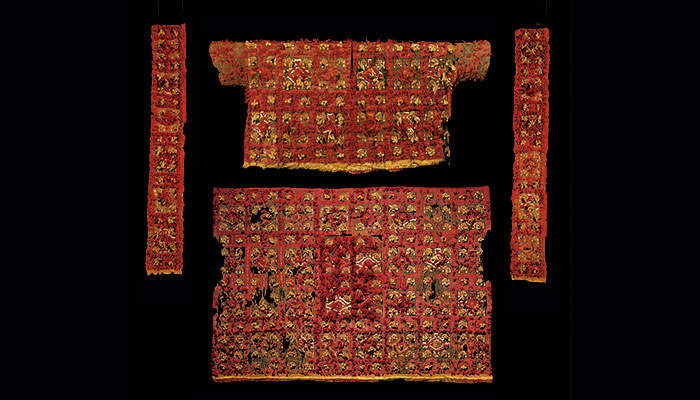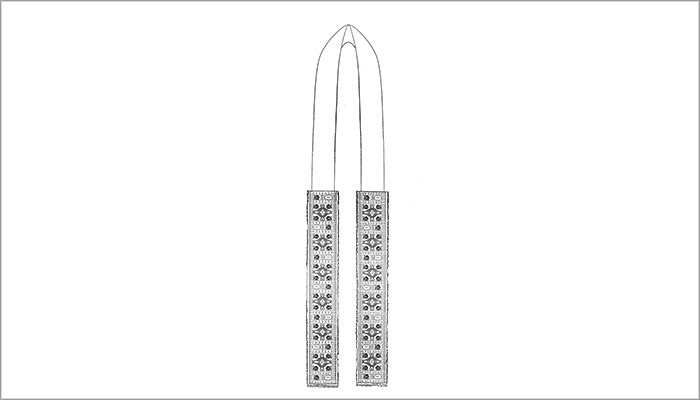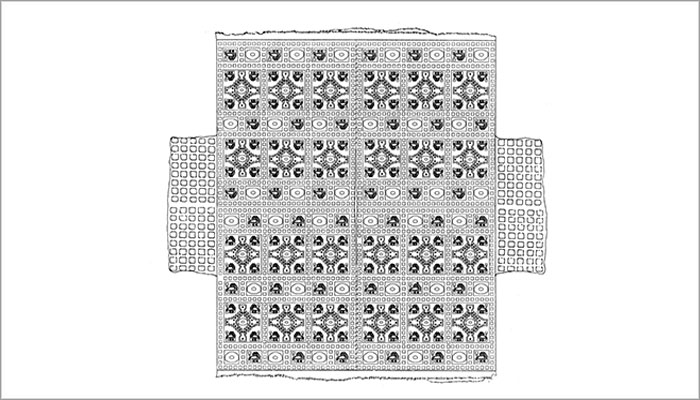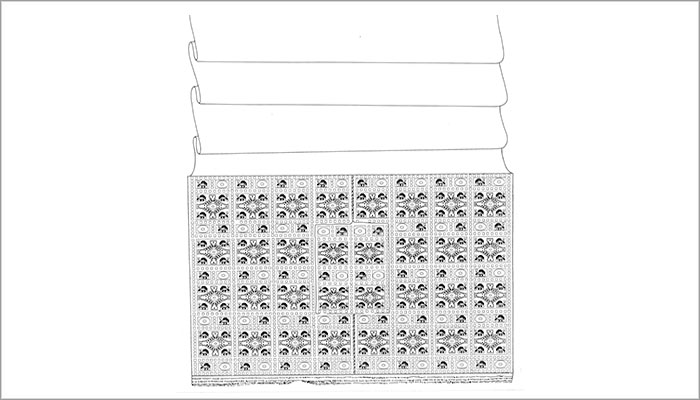Chimu, Labyrinths of a sacred costume
Making the ceremonial costume
The turban
It consisted of a long central cloth. Weavers sewed two panels with the same iconography as the rest of the costume at each end. The cloth is plain weave, using a fine thread of dark coffee colored cotton which gives a light and flexible texture, in accord with its functional use as a headband. The ground of the panels with iconography was made in a reticular weave with a triangular base and tapestry, to which tassels, volumetric adornments and fringes were added at the lower and lateral borders.
The tunic
It was made with four lengths of cloth: two larger triangles for the body, joined by a seam at the longest side, with openings at the neck and shoulders, and two smaller rectangles for the sleeves, sewn at both sides of the tunic. A plain open weave was employed to make the cloth for the sleeves, in order to generate a structure of squared openwork marked by stripes in tapestry whose centers were filled with woven oval forms also done in tapestry, to which multiple tassels were attached. The body was made in knotted reticular weave with a triangular base and tapestry, where the design module is inscribed. The lower border of the tunic has three layers of fringes.
The breechcloth
It is the largest garment. It is made of two pieces joined by a seam. The garment, made of coffee-colored cotton in plain weave with double wefts, was sewn to the short skirt. As in the case of the tunic and the turban’s panels with iconography, the skirt was prepared with a ground of reticular weave and tapestry onto which decorations were affixed, following a pattern of distribution similar to that of the other pieces of the costume. Fringes were sewn onto the lower border of the skirt.







































